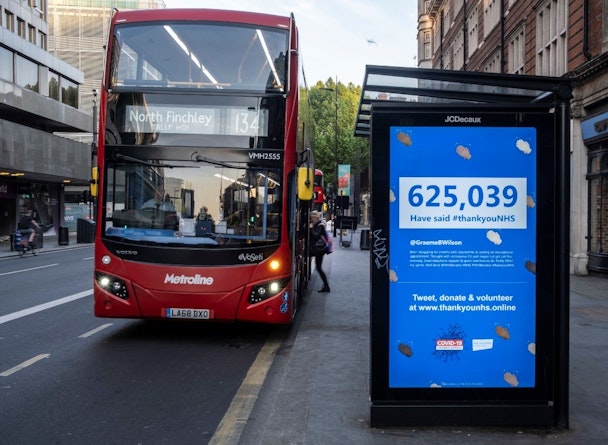Build brand trust among post-pandemic, hyperaware audiences with OOH
The dictionary definition of trust is the firm belief in the reliability, truth, ability or strength of someone or something. For businesses and the general population, trust has increasingly become an important currency, further exacerbated by the events of the past year.

Hyperaware audiences are increasingly out and on the move across the UK
We are living in an era of polarizing political discourse, news decided by algorithms, and social platforms struggling to combat waves of misinformation. Research from the Reuters Institute revealed that just 28% of UK adults trust in the news, while 70% said they do not trust much of what they see on social platforms.
Apple’s recent rollout of opt-in consent for data sharing in iOS 14 has further highlighted the trust issues around digital platforms. In recent years Facebook has faced a myriad of questions around privacy and how they use personal data. With the Cambridge Analytica revelations and the subsequent (and much criticized) testimony from Facebook’s Mark Zuckerberg, we have seen as little as 29% of users believing the social network is committed to privacy. The upsurge in private messaging platforms such as Signal and Telegram also highlights consumer concerns around the use of personal data.
Getting consumers to trust in brands is getting harder too. People are expecting more transparency and responsibility from the companies they buy from and the brands they use – and are ever more vocal when brands don’t live up these expectations. A survey by Clear Channel and JCDecaux in April 2021, ‘The Moment for Trust’, based on 1,000 consumers, has revealed that 81% say trust is a deciding factor in their purchase journey, and yet just 34% said they had trust in the brands they used.
As audiences return to a revised normality with the staged unlocking of society, trust is becoming an ever more important brand metric for advertisers. We have been through a once-in-a-lifetime event, and the long-term after-effects are yet unknown, presenting much uncertainty. Reassurance will be needed for those people returning to offices, going to hospitality venues and visiting their loved ones.
Even before the last lockdown people were paying more attention to what was going on around them. Posterscope’s ‘Mobility Mindset’ research revealed that 70% of respondents were feeling a heightened emotional connection to their out-of-home environment, and these feelings are only set to grow as restrictions ease.
So, with these hyperaware audiences increasingly out and on the move across the UK, brands looking to build trust need to consider their media choices and messaging carefully moving forward – and look to those mediums recognized for their ability to engender this trust.
Research by Vistar Media and MFour at the end of 2020 found that 58% of consumers saw ads on out-of-home (OOH) formats as more trustworthy and relevant than on any other platform. Similarly, our own analysis of almost 60 advertiser campaigns over the last five years, surveying over 35,000 respondents, showed that OOH is proven to drive consumers’ trust in brands. Consumers exposed to a brand’s OOH advertising are on average 10% more likely to state they trust the brand than all respondents (72% OOH Seen v 62% All Respondents).
OOH is a democratized medium. Since it does not have an editorial point of view, the channel operates as a democratic platform, and as a result people believe what they see in this space. Its unique position as a public broadcast platform means it is not mired with the recent trust issues of digital and social platforms. OOH must deal with the demands of many stakeholders, including local authorities, transport operating companies, and retail landlords, each of whom have their own specific demands for what can (and cannot) be displayed on ads on their estate. This self-regulation presents a brand-safe environment for advertisers and gives consumers confidence in the messages they see when they are out and about.
As consumers continue to question the content they are exposed to, and demand more authenticity from brands, there is no doubt that with the right campaign executions OOH can increase trust and confidence in brands.
Lee Mabey is growth strategy director at Posterscope.
Content by The Drum Network member:

Posterscope
Posterscope is the world’s leading out-of-home and location marketing specialist with billings in excess of $3 billion. It knows more about what people think,...
Find out more
